With the White City centre, the world’s largest collection of Bauhaus architecture, was opened in Tel Aviv. On the redevelopment of the White city of the German restorer Norbert Höpfer was involved.
-
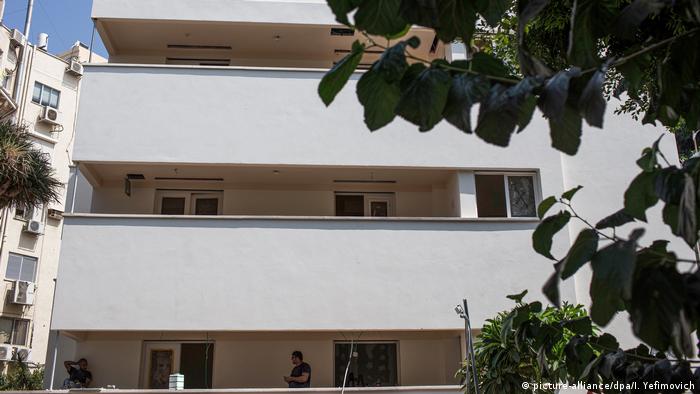
The White city: Bauhaus legacy in Tel Aviv
The Max Liebling House
19. September 2019 opened in Tel Aviv in the Max Liebling house (above) at White City centre, which includes the world’s largest collection of Bauhaus architecture. In the Israeli city with the largest collection of buildings in the International style, which also includes the Bauhaus. The centre is funded by Germany until 2025, with around three million euros.
-
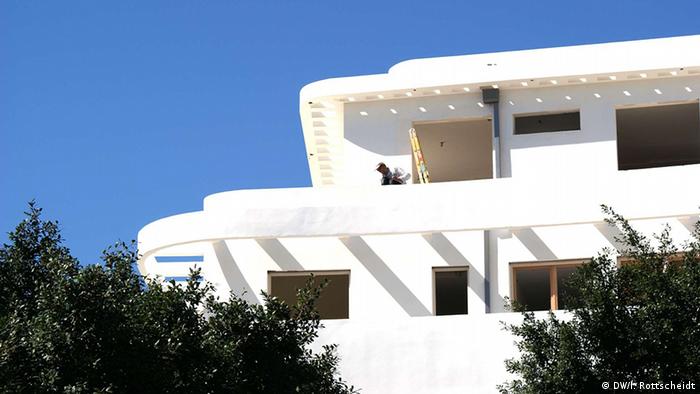
The White city: Bauhaus legacy in Tel Aviv
Salt and steel-reinforced concrete
Only a few of the approximately 4000 buildings radiate in its original bright colors. The heritage of European immigrants who had fled the Nazis to Palestine at that time, to continued, over the decades, the salty Mediterranean sea air, increasing traffic and the high temperatures. In addition, the then steel used in concrete made with time problems
-
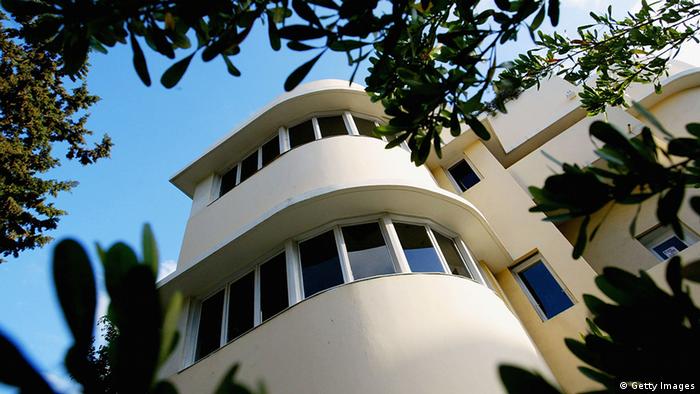
The White city: Bauhaus legacy in Tel Aviv
The Bauhaus in Germany
Germany has a particular interest in the Bauhaus, the art and architecture school in the 1920s and 1930s, with their centers in Weimar, Dessau and Berlin. European immigrants brought the ideas of the Bauhaus to the new and emerging Tel Aviv. After Hitler’s seizure of power in 1933, more and more Jews fled to Palestine, among them graduates of the Bauhaus-school in Dessau.
-
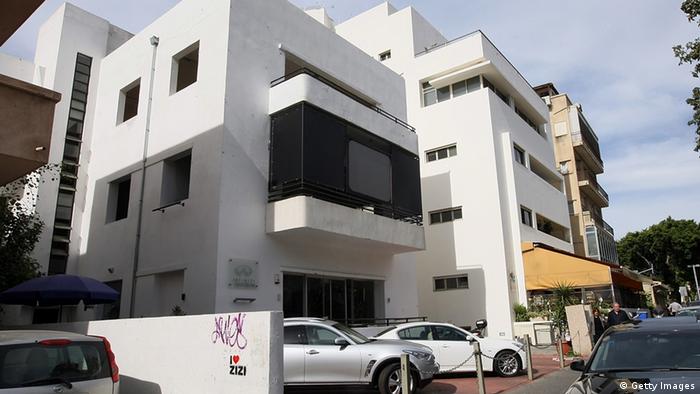
The White city: Bauhaus legacy in Tel Aviv
The Form follows the function
For the many of the new immigrants in Palestine affordable housing had to be created. The function-oriented Bauhaus style was a perfect fit. So dunes houses grew up in the former sand with clear forms, cubist and round. The leitmotif of the Bauhaus Designs was: Form follows function.
-
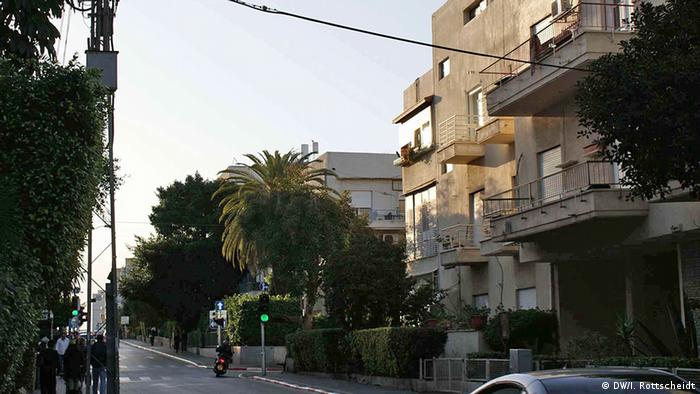
The White city: Bauhaus legacy in Tel Aviv
Social Housing
In Frishman Street, the sprawling building still stands today complex of Arieh Sharon (1900-1980). The Polish-born architect had studied at the Bauhaus in Dessau. In 1936, he built on behalf of the city a three-storey village with a shady courtyard. At the time, the cheap two-room apartments were intended for working-class families and poorer immigrants.
-
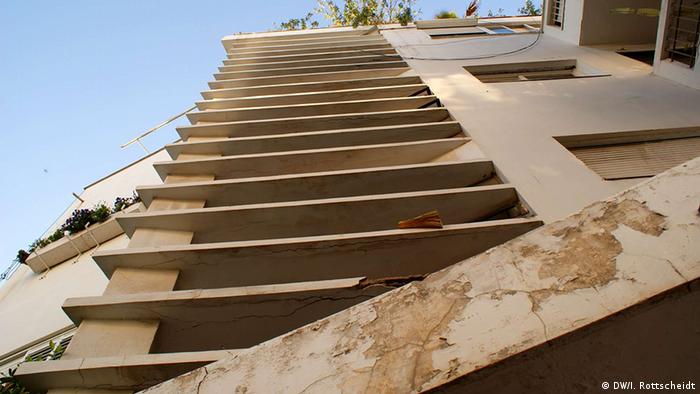
The White city: Bauhaus legacy in Tel Aviv
Mediterranean Conditions
Quickly, the architects realized that the climatic and economic conditions in the Middle East to Build a different than in Germany required. The new Bauhaus buildings in Tel Aviv were part of a large balcony. Their balustrades were provided with horizontal slots, so that the air could circulate better. In the summer, the temperatures climb in Israel, about 40 degrees Celsius.
-
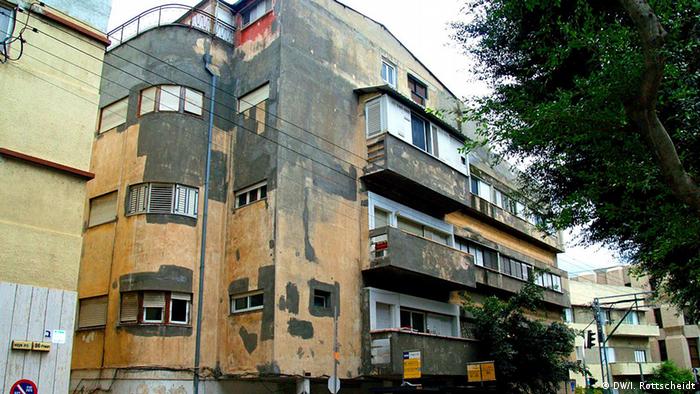
The White city: Bauhaus legacy in Tel Aviv
Expiration Of The Legacy
The temperatures are one of the reasons why the world heritage site in Tel Aviv is in danger. Some of the buildings are in danger of falling down – Tel Aviv is located in an earthquake zone. About half of the 4000 buildings has been restored to 2019, largely without state subsidies. UNESCO, let Israel know that the world heritage-could the title be revoked.
-
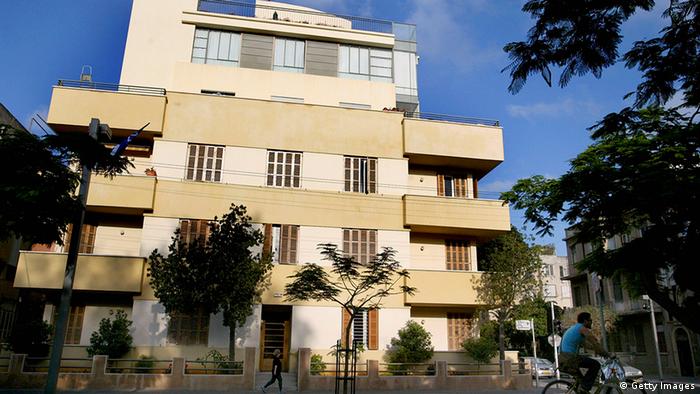
The White city: Bauhaus legacy in Tel Aviv
Monument protection – a duty of the state?
In order to create financial incentives for rehabilitation, it allows the owners, the houses are two storeys to increase. The renovation costs are passed frequently on the tenant. Philipp Oswalt of the Bauhaus Dessau Foundation sees the critical: “If a cultural heritage is something of value, it needs government funding.”
-
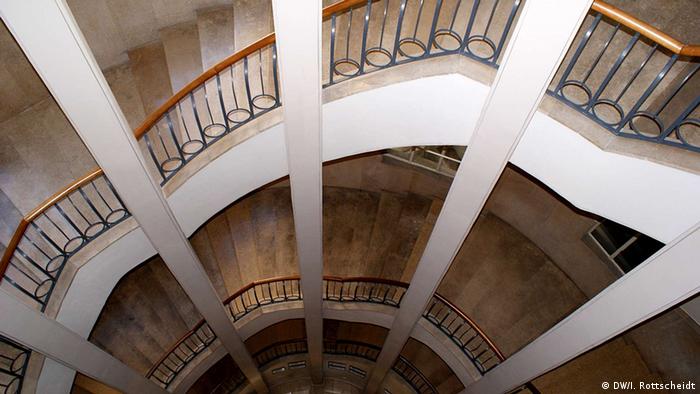
The White city: Bauhaus legacy in Tel Aviv
Tiles for the new home
The stairs of the Hotel Cinema: Here the use of noble materials were used. The emigrants of the 1930s and 1940s had brought to the part of building materials from Germany. Money Jews were allowed to run after 1933, little more, so they bought tiles, tiles and window shutters – in order to rebuild a new home. In the Bauhaus buildings of Tel Aviv, Israeli history is German.
Author: Torsten Landsberg, Ina Rottscheidt
-

The White city: Bauhaus legacy in Tel Aviv
The Max Liebling House
19. September 2019 opened in Tel Aviv in the Max Liebling house (above) at White City centre, which includes the world’s largest collection of Bauhaus architecture. In the Israeli city with the largest collection of buildings in the International style, which also includes the Bauhaus. The centre is funded by Germany until 2025, with around three million euros.
-

The White city: Bauhaus legacy in Tel Aviv
Salt and steel-reinforced concrete
Only a few of the approximately 4000 buildings radiate in its original bright colors. The heritage of European immigrants who had fled the Nazis to Palestine at that time, to continued, over the decades, the salty Mediterranean sea air, increasing traffic and the high temperatures. In addition, the then steel used in concrete made with time problems
-

The White city: Bauhaus legacy in Tel Aviv
The Bauhaus in Germany
Germany has a particular interest in the Bauhaus, the art and architecture school in the 1920s and 1930s, with their centers in Weimar, Dessau and Berlin. European immigrants brought the ideas of the Bauhaus to the new and emerging Tel Aviv. After Hitler’s seizure of power in 1933, more and more Jews fled to Palestine, among them graduates of the Bauhaus-school in Dessau.
-

The White city: Bauhaus legacy in Tel Aviv
The Form follows the function
For the many of the new immigrants in Palestine affordable housing had to be created. The function-oriented Bauhaus style was a perfect fit. So dunes houses grew up in the former sand with clear forms, cubist and round. The leitmotif of the Bauhaus Designs was: Form follows function.
-

The White city: Bauhaus legacy in Tel Aviv
Social Housing
In Frishman Street, the sprawling building still stands today complex of Arieh Sharon (1900-1980). The Polish-born architect had studied at the Bauhaus in Dessau. In 1936, he built on behalf of the city a three-storey village with a shady courtyard. At the time, the cheap two-room apartments were intended for working-class families and poorer immigrants.
-

The White city: Bauhaus legacy in Tel Aviv
Mediterranean Conditions
Quickly, the architects realized that the climatic and economic conditions in the Middle East to Build a different than in Germany required. The new Bauhaus buildings in Tel Aviv were part of a large balcony. Their balustrades were provided with horizontal slots, so that the air could circulate better. In the summer, the temperatures climb in Israel, about 40 degrees Celsius.
-

The White city: Bauhaus legacy in Tel Aviv
Expiration Of The Legacy
The temperatures are one of the reasons why the world heritage site in Tel Aviv is in danger. Some of the buildings are in danger of falling down – Tel Aviv is located in an earthquake zone. About half of the 4000 buildings has been restored to 2019, largely without state subsidies. UNESCO, let Israel know that the world heritage-could the title be revoked.
-

The White city: Bauhaus legacy in Tel Aviv
Monument protection – a duty of the state?
In order to create financial incentives for rehabilitation, it allows the owners, the houses are two storeys to increase. The renovation costs are passed frequently on the tenant. Philipp Oswalt of the Bauhaus Dessau Foundation sees the critical: “If a cultural heritage is something of value, it needs government funding.”
-

The White city: Bauhaus legacy in Tel Aviv
Tiles for the new home
The stairs of the Hotel Cinema: Here the use of noble materials were used. The emigrants of the 1930s and 1940s had brought to the part of building materials from Germany. Money Jews were allowed to run after 1933, little more, so they bought tiles, tiles and window shutters – in order to rebuild a new home. In the Bauhaus buildings of Tel Aviv, Israeli history is German.
Author: Torsten Landsberg, Ina Rottscheidt
Around 4000 buildings in the White city, a UNESCO world cultural heritage in Tel Aviv. In the 1930s and 1940s, mostly of a Jewish architect built the living city is a unique collection of buildings of the modern International style. Many of the buildings inspired by the Bauhaus.
In the Max-darling-house opened on the 19. September 2019, the White City Center. Norbert Höpfer is a mineralogist and a PhD geologist, as a restorer, he has participated since 2006 in the rehabilitation of some 30 buildings in Tel Aviv, among other things, he worked at the Max-darling-house. What matters in the restoration and where the differences in heritage protection between Germany and Israel are, he says in a DW interview.
DW: Mr Höpfer, the Tooth of time has gnawed at the Bauhaus-inspired buildings in Tel Aviv. How white is the White city is today?
Norbert Höpfer: I think, after many renovations, it is whiter than ever before. We don’t know how the houses were originally painted, because we Know it is on the Black-and-recordings are not able to recognize. It wasn’t all necessarily white, there were shades of green and Ochre I’ve found in a house Apricot as the first coat of paint. Unfortunately, the complete plaster has been knocked off in Israel at the time of restoration often, which is why only rarely plaster remains are preserved, and we have no detailed documentation.
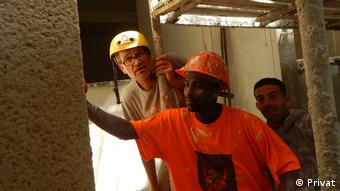
Norbert Höpfer (left) at Work in Tel Aviv
In the Max Liebling house the White City centre has now been opened. They were involved in the restoration, which features occurred in the process?
I was involved in the middle of the process and have delivered a report to the façade problem. It has given me a headache, because a plaster was on it that was not Original, but maybe 15 years old. On each square metre of 20 centimetres arrived crack in the facade. We have done Workshops in which the aim was: How can we fix this Bauhaus-Form? How can we manage the cleaning techniques? We must from Generation to Generation, otherwise it is lost.
Many of the houses in Tel Aviv are in disrepair. What sets the houses for the most part: the salt content of the Mediterranean air, the exhaust fumes of the traffic or the high temperatures?
The old builders-style ended with “gründerzeit” and art Nouveau. The Bauhaus has set other standards. The wanted to build different, it was scary built slim and tries to technically progress faster. The backbone of the Bauhaus reinforced concrete, which at that time was not very strong. By the time he loses alkalinity [basic effect, note. d. Red.], and these houses stand for 80 years. In Tel Aviv, the salt air, but we have the same phenomena in Germany, that’s why the highway bridges in the 1950s and 1960s dilapidated are.
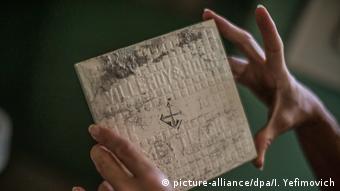
An Original ceramic from the Max Liebling house
They started in 2006, to work in Tel Aviv in the restoration. How did you come to?
I had to do with a special lime from France. An Israeli restaurateur has come back again and again with questions to me. I then traveled to Israel, to me the thing to look at. A year later, I remained fixed.
On what features you are pushed back in the buildings and where you have recognized your Expertise?
I started in Israel and in the restoration of the Templars-houses, the Christian Templars from Baden-Württemberg have built, as at the end of the 19th century. Century, emigrated to Palestine. Then I worked in Tel Aviv to green at the moment-buildings-and-mortar developed. The Germans always want to know exactly what you are doing. The Israelis want to know just how long something takes and what it costs. That’s why I was able to try out in Tel Aviv, and materials – without that someone took an interest in. In Germany, you have to first discuss a long time, why now this or that lime.
So you were able to perfect the mixture of materials in Israel, because they were unobserved work?
Yes, my mixes are tested on real buildings. When you mix in Israel, five, six things, the little interest in Germany is very interested in the Details of the recipes. So I have made a Transfer of Know-how between the countries.
The White city is since 2003 UNESCO world heritage site. There are in the monument protection differences between Germany and Israel?
It is still working very much Hand in Israel. We actually have an army of Palestinians in Israel, we badly need as broken through in Germany. The lack of us. For larger projects, in Germany it’s not financially viable to plastering by Hand. Since the Israelis are ahead of us. Negative in Israel is that the facades are often made, even with new materials such as synthetic resin paints. Bauhaus is original painted with lime, the a different look. Lime has a Tradition of 10,000 years.
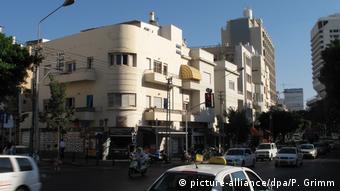
White city: the facades of the buildings were always white, is questionable
You have helped as a German in Tel Aviv in the restoration of houses, which were planned by emigrants who had fled from the Nazis. For you present, that you work to get the German-Jewish heritage?
For me, the issue is rather how it came to be that so many Bauhaus buildings were built in Tel Aviv: the Left and the Jews fled before the Nazis. The avant-garde in Germany was this way. The Bauhaus student at the time, built what was in – and Tel Aviv was, in comparison to Europe, an oasis, because it was touched by the war, and at the same time houses had to be built. In the whole of Europe there was no such free space. From the Moment in 1948, the war of independence broke out, there was in Israel no more resources. As in Germany after 1945 built had to be cheap, high-drawn, simple, thin walls – was built from 1948, also in Israel.
You are about to work themselves to the Bauhaus Fan?
I’m a big critic of this Build. I think the buildings look incredibly chic, but they are not geared to longevity. Who builds a flat roof and large balconies in Germany, where we have rain and snow load? Bauhaus has moved to the walls and grew to a height of many skyscrapers today are based on the Bauhaus idea, but are actually nothing more than height, built underground garage: Everything is on pillars, inside there is a concrete core for elevators and building technology, the façade is clad. Since the original Bauhaus, with masonry and lime honest was.
The interview was conducted by Torsten Landsberg.











